Lemon Pound Cake
This post may contain affiliate links. Read my full disclosure policy.
This lemon pound cake is the ultimate dessert for lemon lovers.
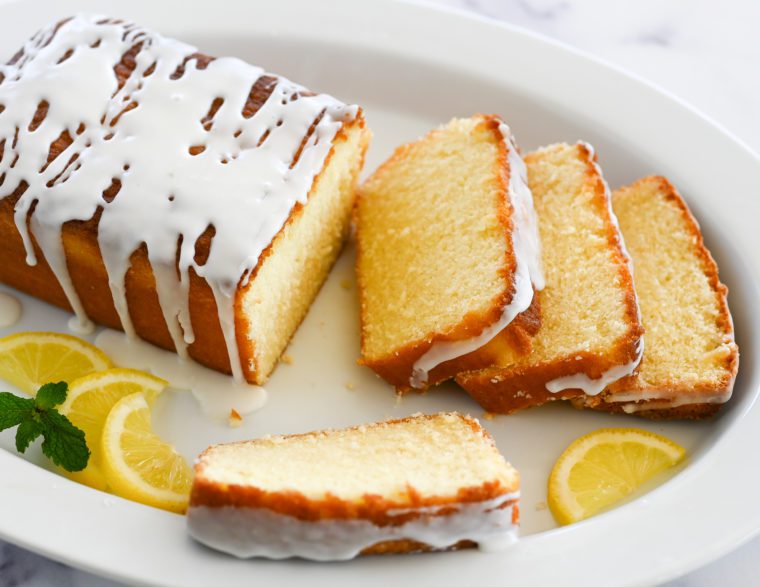
Calling all lemon lovers! This lemon pound cake is a dessert made just for you. The recipe incorporates both lemon zest and lemon juice into the cake batter, infusing the cake with a lovely lemon flavor. But the real magic happens after baking — the cake is generously doused with lemon syrup and then drizzled with a tart lemon glaze, delivering an intense burst of lemon flavor with every bite. The recipe yields two ultra-moist loaves that stay fresh for days on the countertop or can be frozen for later. If you’d like to switch things up, try my popular lemon poppyseed cake and lemon blueberry pound cake variations. A big thank you and shoutout to Karen Tannenbaum, one of my longtime readers, for inspiring this wonderful recipe!
What You’ll Need To Make Lemon Pound Cake
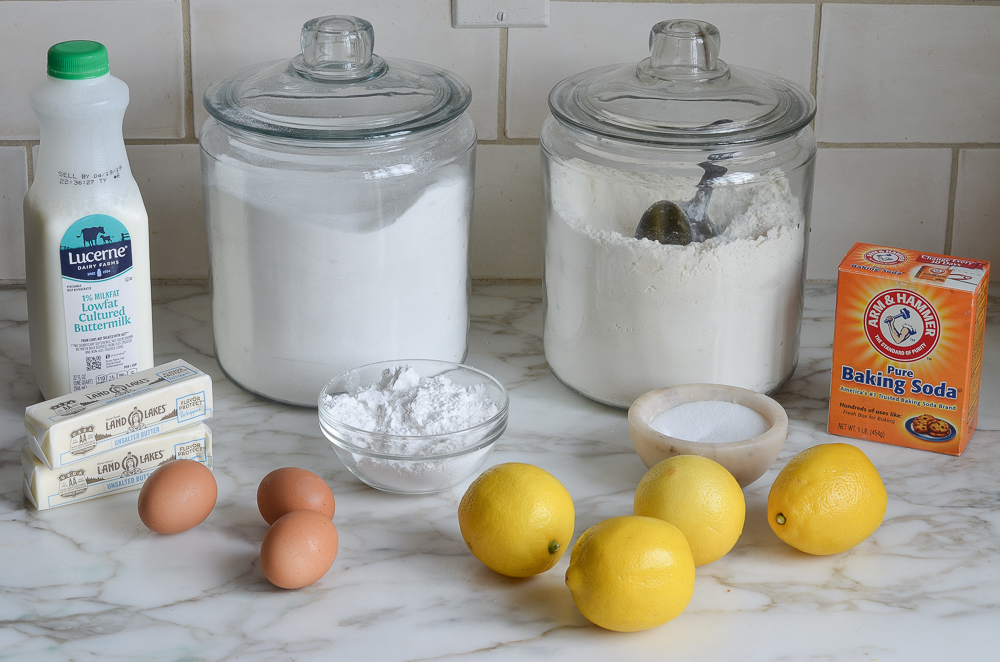
STEP-BY-STEP INSTRUCTIONS
Start by zesting and juicing your lemons. And be sure you zest the lemons first, otherwise, it will be impossible once they are juiced. The best tool for zesting is a rasp grater but any fine grater will do.
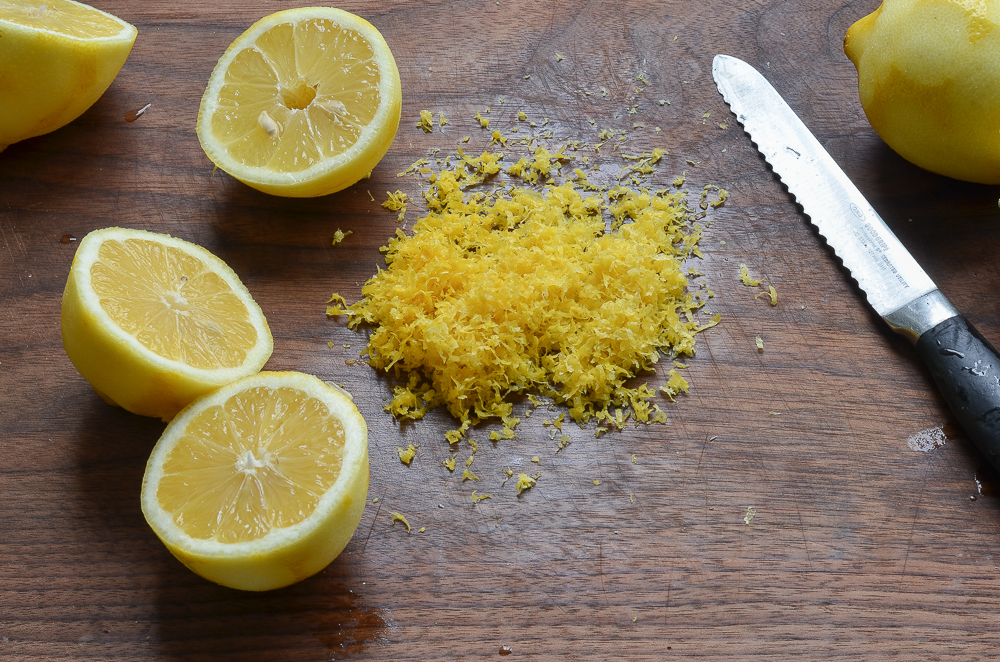 Combine the flour, salt, and baking soda in a mixing bowl. I always add dry ingredients in little piles so I don’t forget what I’ve already added.
Combine the flour, salt, and baking soda in a mixing bowl. I always add dry ingredients in little piles so I don’t forget what I’ve already added.
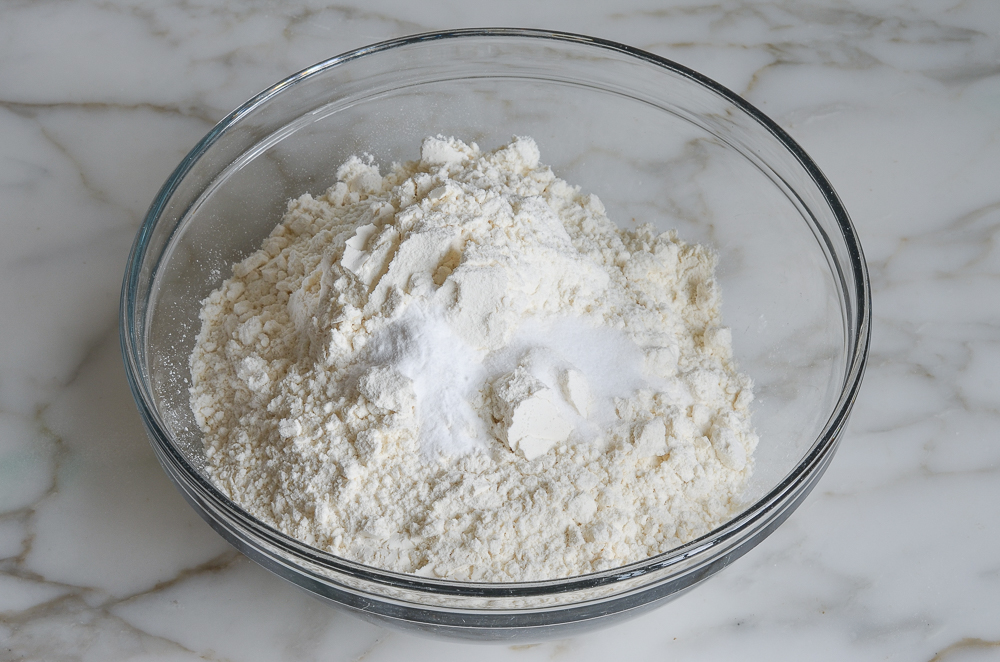 Whisk and set aside.
Whisk and set aside.
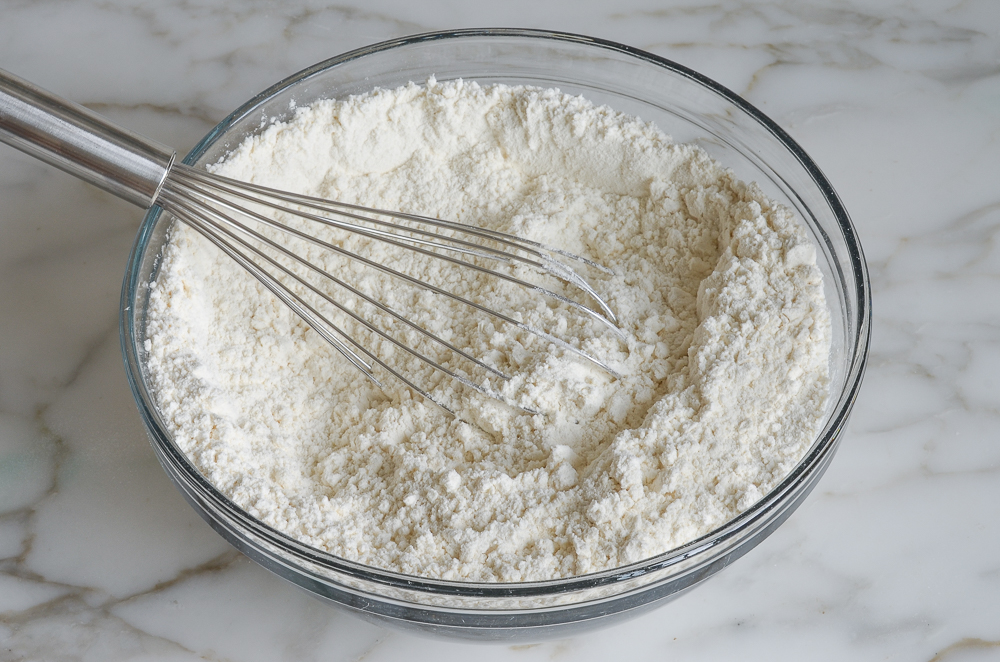
In another bowl, whisk together the buttermilk, lemon zest, and lemon juice. Set aside.
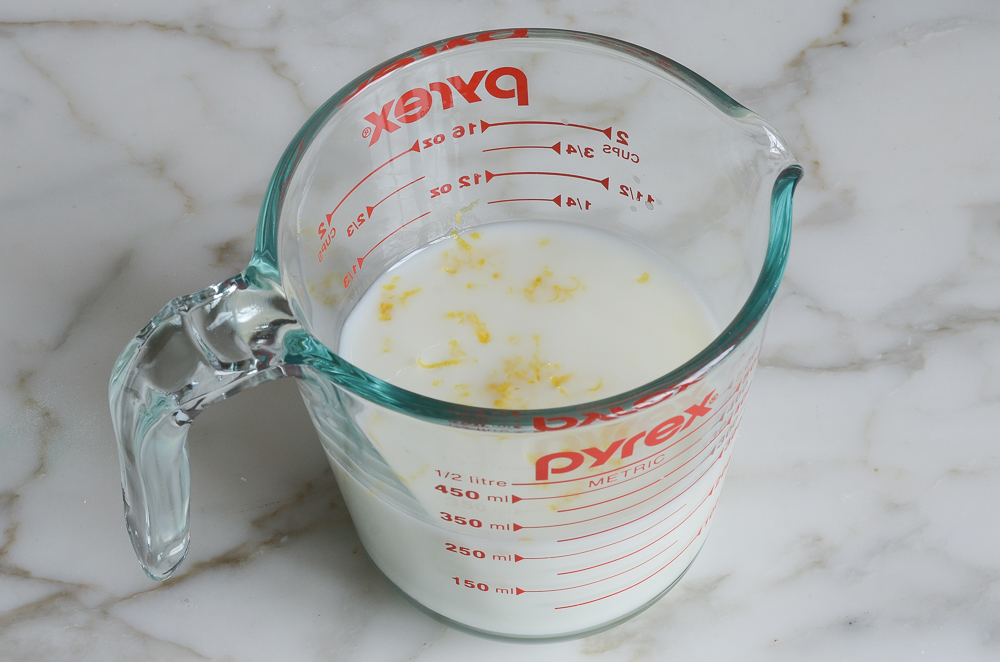
In the bowl of an electric mixer fitted with the paddle attachment (or beaters), cream the butter and sugar on medium speed until light and fluffy, 3 to 4 minutes.
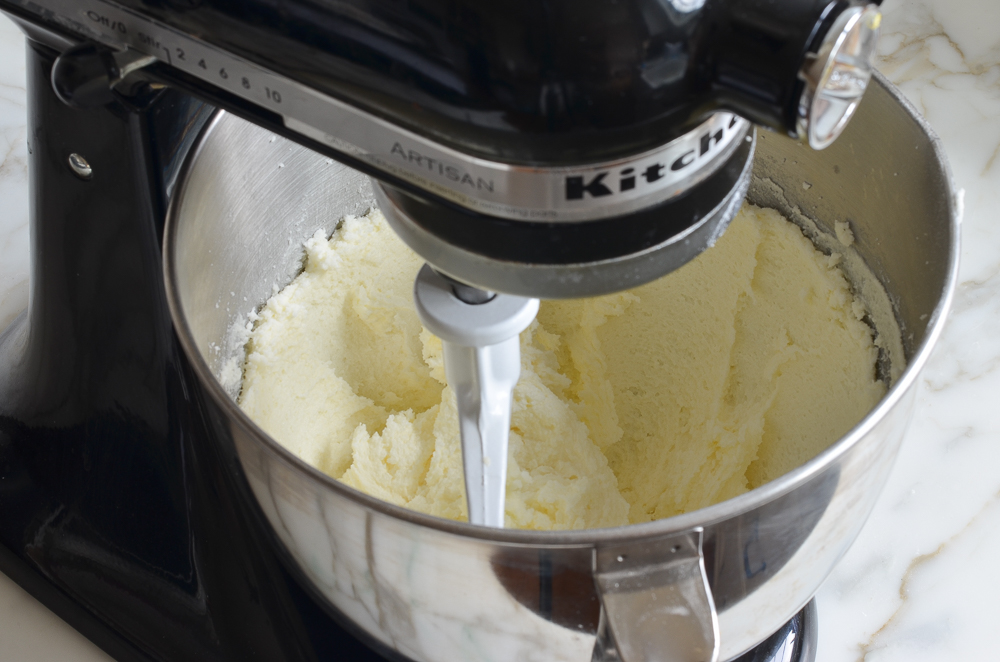
Scrape down the sides of the bowl, then beat in the eggs one at a time, beating well after each addition. Scrape down the sides of the bowl again.
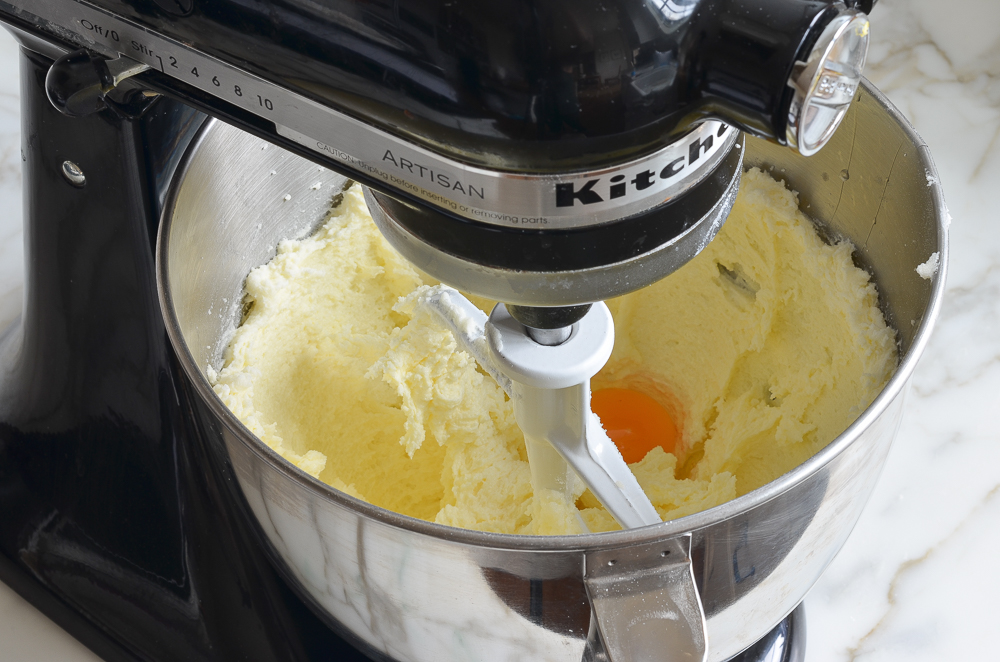
With the mixer on low speed, beat in one-quarter of the flour mixture, then one-third of the buttermilk mixture. Beat in another quarter of the flour, then another third of the buttermilk mixture. Repeat with another quarter of the flour and the remaining buttermilk mixture. Finally, beat in the remaining flour mixture.
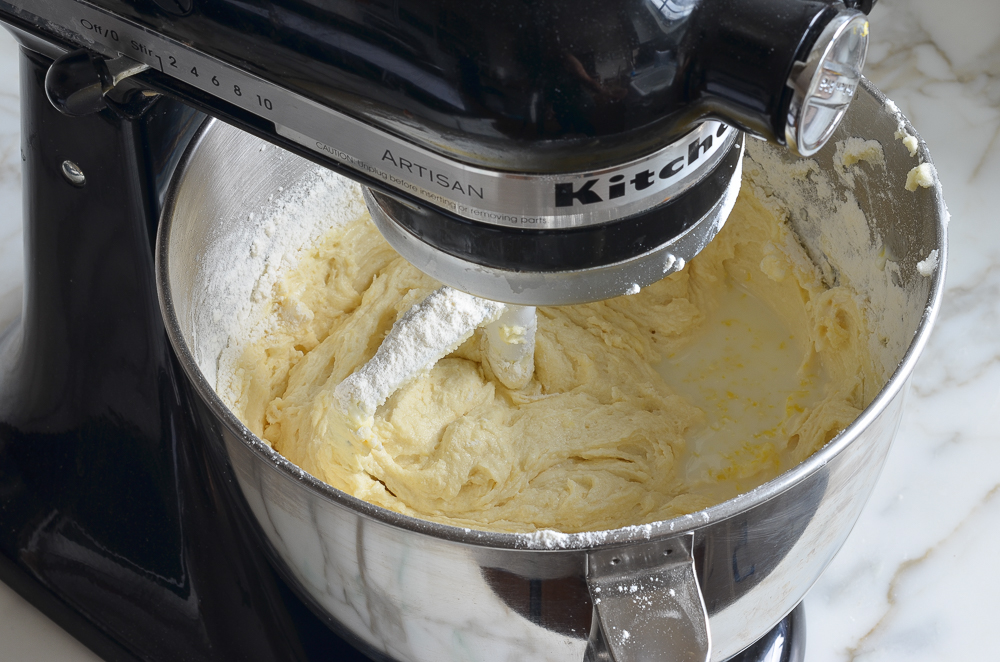
Scrape down the sides of the bowl, and give a quick mix to make sure all of the ingredients are well-incorporated.
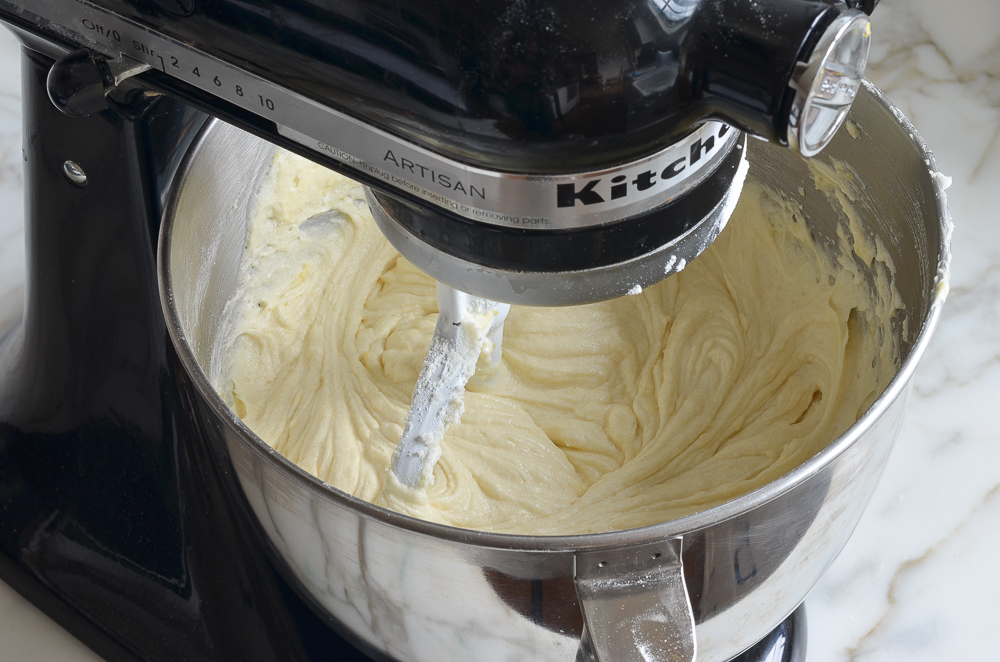
Transfer the cake batter to the prepared pans and smooth with a rubber spatula.
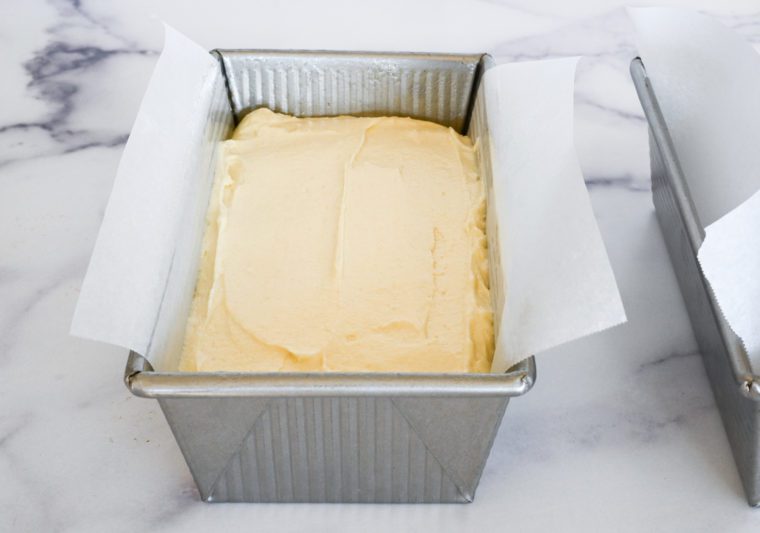
Bake for 55 to 65 minutes, or until the top is golden and a tester comes out clean.
Set the cakes on a cooling rack, and cool in the pans for 10 minutes.
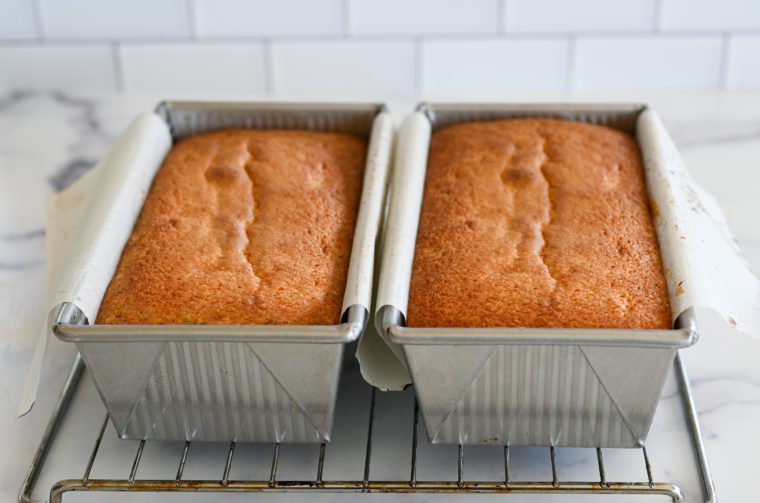
Carefully run a knife along the unlined sides of the pans to loosen the cake from the pan. Using the parchment slings, lift the cakes out of the pans and place onto the rack, leaving the parchment paper in place under the cakes. Let cool for about 1 hour.
When the cakes are almost cool, make the syrup. Combine the water and sugar in a saucepan and bring to a boil. Remove from the heat and stir in the lemon juice.
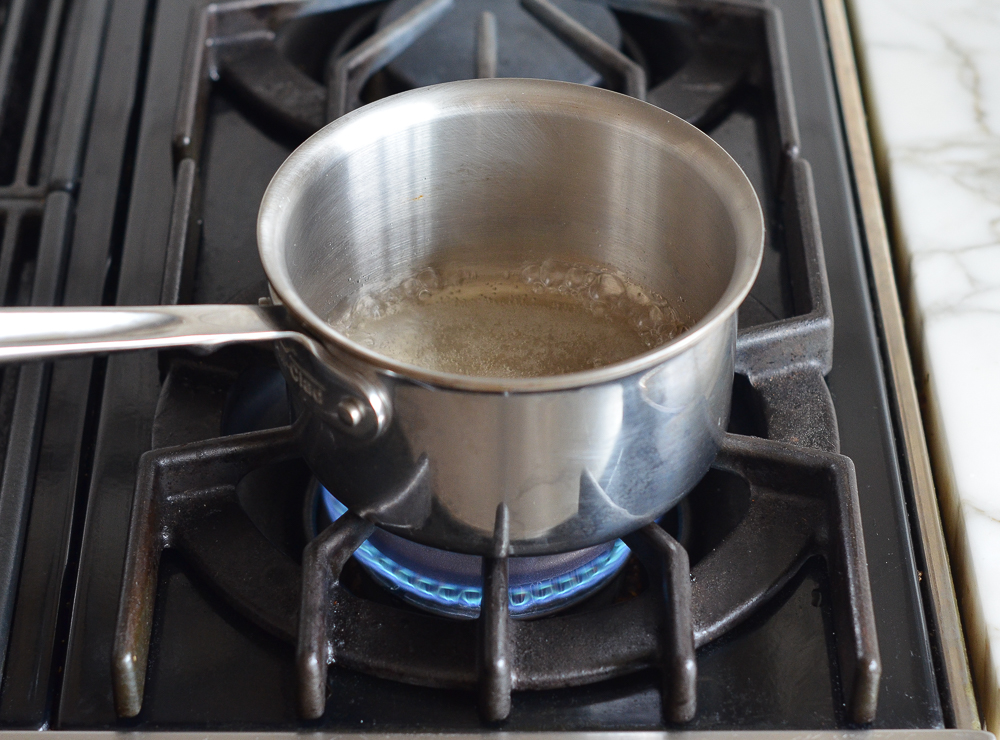
To make the glaze: in a medium bowl, whisk together the confectioners’ sugar and lemon juice. Add more confectioners’ sugar or lemon juice as necessary to make a thick but pourable glaze (it should be a little thicker than you’d think, about the consistency of molasses or honey).
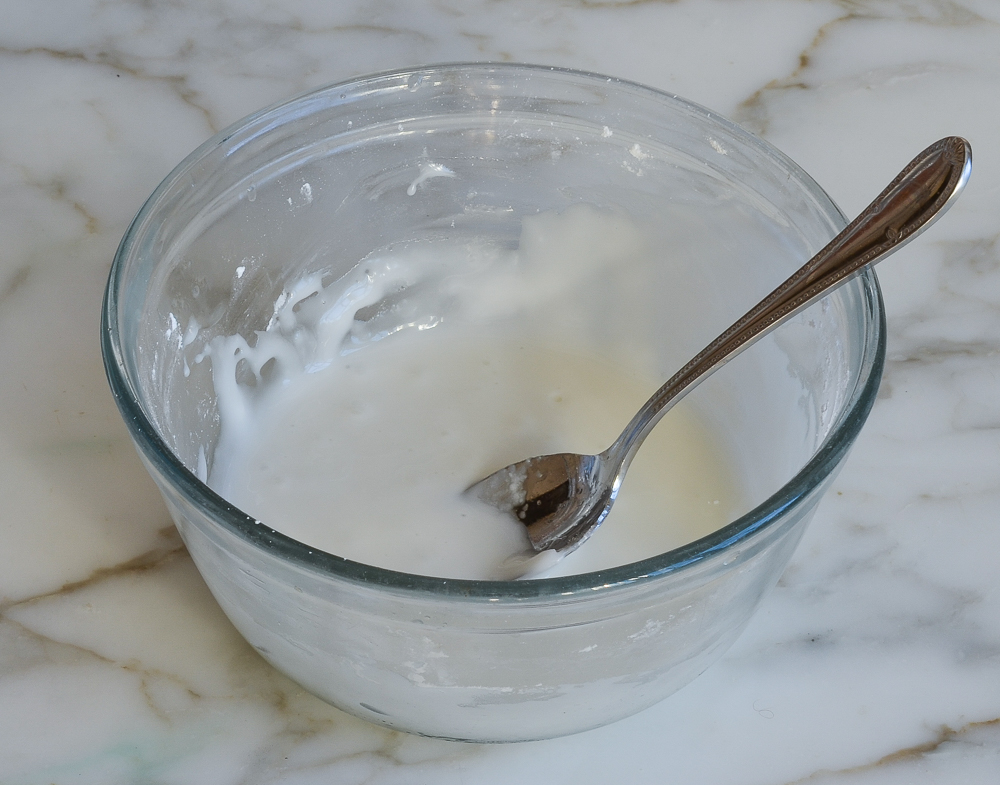
When the cakes are cool, carefully transfer them to serving platters. Gradually brush the warm syrup all over the cakes, including the sides, letting it soak in as you go.
Finally, spoon the glaze over the top of the cake, letting it drip down the sides.
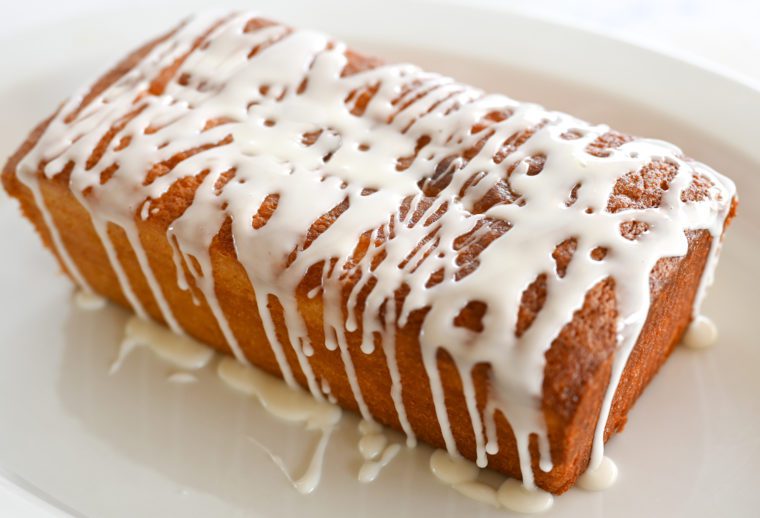
Let the cakes sit for about one hour to allow the glaze to set before serving.
How To Freeze Lemon Pound Cake
The cakes can be frozen without the glaze for up to 3 months. After they are completely cooled, double-wrap them securely with aluminum foil or plastic freezer wrap, or place them in a heavy-duty freezer bag. Thaw overnight on the countertop before serving. (Add the syrup before the cake is frozen and add the glaze after the cake is thawed.)
Note: This recipe was updated in 2022; to see the original version, click here.

You May Also Like
- Warm Lemon Pudding Cakes
- Lemon Poppy Seed Muffins
- Lemon Bars
- Cake Pans to Cookie Sheets: 16 Essential Baking Pans
Lemon Pound Cake
This lemon pound cake is the ultimate dessert for lemon lovers.
Ingredients
For the Cake
- 3 cups all-purpose flour, spooned into measuring cup and leveled-off with a knife
- ½ teaspoon baking soda
- ½ teaspoon salt
- 1 cup buttermilk (low-fat is fine) (see note)
- 2 tablespoons (packed) grated lemon zest (see note)
- 2 tablespoons fresh lemon juice
- 2 sticks (1 cup) unsalted butter, softened
- 2¼ cups granulated sugar
- 3 large eggs
For the Syrup
- 2 tablespoons water
- 2 tablespoons granulated sugar
- 2 teaspoons fresh lemon juice
For the Glaze
- 1 cup confectioners' sugar
- 2 tablespoons fresh lemon juice
Instructions
- Preheat the oven to 350°F and set an oven rack in the middle position. Spray two 8½ x 4½-inch loaf pans with nonstick cooking spray. Line the long sides of the pans with parchment paper “slings” and spray lightly with nonstick cooking spray again.
- In a medium bowl, whisk together the flour, baking soda and salt. Set aside.
- In another bowl, whisk together the buttermilk, lemon zest and lemon juice. Set aside.
- In the bowl of an electric mixer fitted with the paddle attachment (or beaters), cream the butter and sugar on medium speed until light and fluffy, 3 to 4 minutes. Scrape down the sides of the bowl, then beat in the eggs one at a time, beating well after each addition. Scrape down the sides of the bowl again.
- With the mixer on low speed, beat in one-quarter of the flour mixture, then one-third of the buttermilk mixture. Beat in another quarter of the flour, then another third of the buttermilk mixture. Repeat with another quarter of the flour and the remaining buttermilk mixture. Finally, beat in the remaining flour mixture. Scrape down the sides of the bowl, and give a quick mix to make sure all of the ingredients are well-incorporated.
- Divide the thick batter into the prepared pans and smooth with a rubber spatula. Bake for 55 to 65 minutes, or until the top is golden and a tester comes out clean.
- Set the cakes on a cooling rack, and cool in the pans for 10 minutes. Carefully run a knife along the unlined sides of the pans to loosen the cake from the pan. Using the parchment slings, lift the cakes out of the pans and place onto the rack, leaving the parchment paper in place under the cakes. Let cool for about 1 hour.
- When the cakes are almost cool, make the syrup. Combine the water and sugar in a saucepan and bring to a boil. Remove from the heat and stir in the lemon juice.
- When the cakes are cool, carefully transfer them to serving platters.
- Gradually brush the warm syrup all over the cakes, including the sides, letting it soak in as you go.
- To make the glaze: in a medium bowl, whisk together the confectioners' sugar and lemon juice. Add more confectioners' sugar or lemon juice as necessary to make a thick but pourable glaze (it should be a little thicker than you'd think, about the consistency of molasses or honey). Spoon the glaze over the top of the cake, letting it drip down the sides. Let the cakes sit for about one hour to allow the glaze to set before serving.
- Note: If you’d like to make your own buttermilk, check out the easy method here.
- Note: You'll need 4 to 5 large lemons for the entire recipe.
- Make-Ahead/Freezer-Friendly Instructions: The cakes can be made up to 1 day ahead of time and stored in a cake dome or airtight container at room temperature. They can also be frozen (without the final glaze) for up to 3 months. After they are completely cooled, double-wrap securely with aluminum foil or plastic freezer wrap, or place them in a heavy-duty freezer bag. Thaw overnight on the countertop before serving. (Add the syrup before the cake is frozen and add the glaze after the cake is thawed.)
Nutrition Information
Powered by ![]()
- Per serving (16 servings)
- Serving size: 1 slice
- Calories: 313
- Fat: 7g
- Saturated fat: 4g
- Carbohydrates: 59g
- Sugar: 40g
- Fiber: 1g
- Protein: 4g
- Sodium: 143mg
- Cholesterol: 51mg
This website is written and produced for informational purposes only. I am not a certified nutritionist and the nutritional data on this site has not been evaluated or approved by a nutritionist or the Food and Drug Administration. Nutritional information is offered as a courtesy and should not be construed as a guarantee. The data is calculated through an online nutritional calculator, Edamam.com. Although I do my best to provide accurate nutritional information, these figures should be considered estimates only. Varying factors such as product types or brands purchased, natural fluctuations in fresh produce, and the way ingredients are processed change the effective nutritional information in any given recipe. Furthermore, different online calculators provide different results depending on their own nutrition fact sources and algorithms. To obtain the most accurate nutritional information in a given recipe, you should calculate the nutritional information with the actual ingredients used in your recipe, using your preferred nutrition calculator.

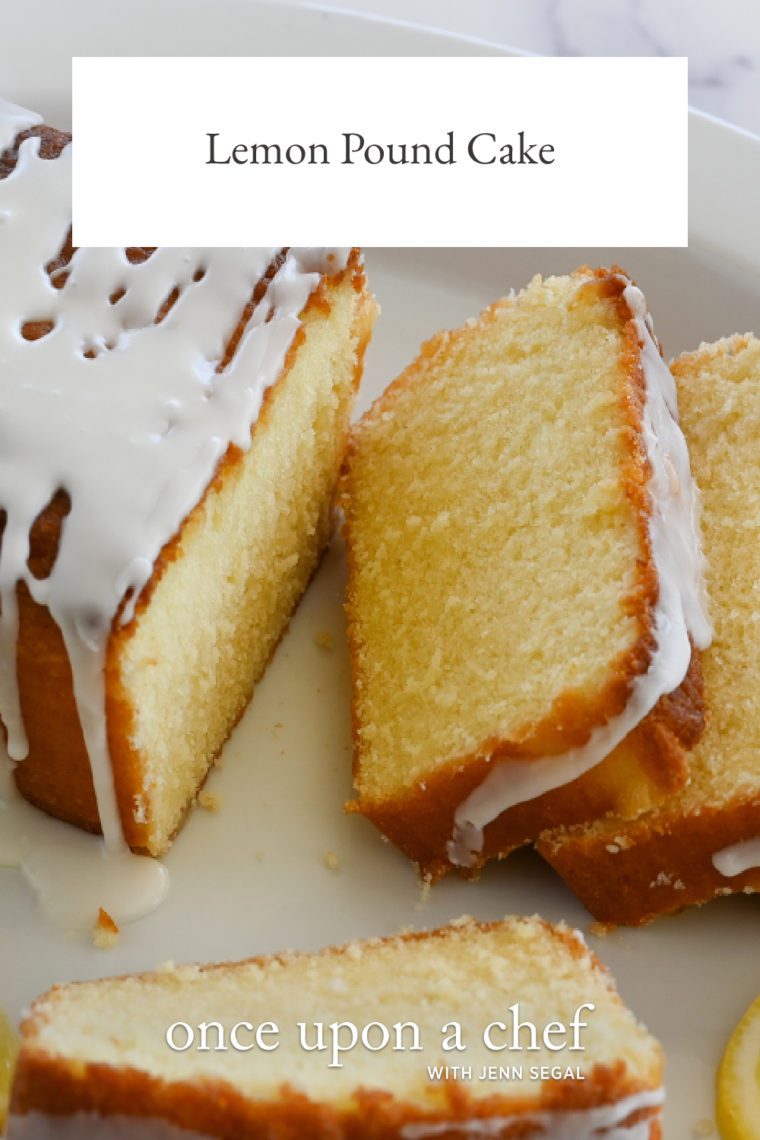
I’ve baked this quite a few times now and it is one of my most favourite recipe. My family and friends loves this cake. It is not overly sweet, and has just right amount of lemon, which is what I love about this recipe.
QUESTION:
This is the most delicious and pretty lemon cake I’ve ever made HOWEVER please help me figure out how to keep it intact between glazing and transferring it to the serving plate. It did fine coming out of the pan. I glazed it on the cooling rack and all was good. Then I tried to lift it with a large spatula and my hands to the cake stand and it split apart in two places. I had to slice it and then reconstruct it on the serving platter for drizzling with the syrup. Again, it got rave reviews, even though I was a bit embarrassed about the presentation.
You could try adding the syrup right on the serving plate if that’s easier. Hope that helps!
Hi Jenn!
Thank you for sharing your recipe. Just wondering if this recipe is suitable to be baked as cupcake?
I haven’t made this cake into cupcakes, but I think it would work. I’d suggest the same temp and start checking for doneness at about 18 minutes. Hope you enjoy!
Will this turn out the same if I were to use an angel food cake baking pan?
Yes. 🙂 Enjoy!
Thank you for your quick response. I just asked you a few more questions but I asked on the wrong cake. It was the lemon poppyseed pound cake🤭. I’m making this pound cake for an event tomorrow evening. I’m going to make it tonight ahead of time.
Should I brush on the glaze after it’s done or wait till tomorrow? How should I store it tonight to keep it moist? Thanks
Hi Rose, I’d go ahead and glaze it now but either way will work just fine. You don’t need to worry about it staying moist; it keeps well for days. I usually store it in a cake dome at room temperature; you could also store it in the fridge, just be sure to bring to room temperature before serving.
AMAZING recipe!! My whole family LOVED this cake. Perfect balance of lemon and sugar. SUPER moist and not dense at all. Three of us managed it eat it all in three days!
Amazing recipe! Loved the cake even without the icing.
This recipe is a keeper! Everyone loved it. I made the glaze with the tsp of melted butter & I added a bit of lemon zest. Fantastic!
I made this for the first time yesterday and served it to dinner guests last night. I followed the recipe to a “T” with all steps except for the glaze. I added approximately 4 oz of cream cheese to further thicken the glaze without having to add add’l powdered sugar. The cake was AMAZING! I’ve tried many different lemon flavored desserts over the years and this one is the best. It retains the tartness without being overly sweet. I used half the batter for a loaf pan and the other 1/2 was poured into mini bundt cake molds. I actually preferred the texture of the bundt cakes to the loaf cake. The smaller mold created a slightly crunchy texture to the cake. After adding the lemon syrup and glaze the result was a fabulous crispy exterior with an incredibly moist interior. Will be making this again, soon!
My family loved this cake! Very easy to make! I really like lemon so I added 1 tsp lemon extract just before mixing was done. It was a hit!!
This is a seriously delicious cake! Wow. The flavour is wonderful. The texture is so soft. It’s perfect. I made it for our Sunday dinner and it’s gone. I find myself wanting to make it for next Sunday as well. Thanks for the fabulous recipe!
Hi Jenn!
So I’ve made this bad boy a couple times and I always come on here to follow everything word for word as I’m making it.
However this time I realized… there were some differences… or wait, am I crazy? Have I made so many of Jenns recipes that I’m forgetting which one was which way?
Well, the sugar in the Bundt pan threw me off and made me check if I was looking at the right recipe! Regardless, I followed the instructions on that and the cake literally flew out before I could turn it the whole way! Thankfully I caught it in time! So yeah, I’m a big fan of that little sugar trick. Winner!
However, in making the final glaze I felt like it just wasn’t right… not as good as the other times I’ve made it… so in going through some comments, someone mentioned the difference as well… and that’s when I knew: I’m not that crazy after all! Things have changed on here 😂!
Anyways, long story short: could we have the alternative method of how to make the more “complex” glaze? This glaze tastes very “grainy” or “dusty”… I don’t know how to describe it. I put more lemon juice but then it just became too thin. I would love to keep the current baking method for the actual cake but if possible have the “older” version of the glaze! Pretty please with a lemon slice on top!!?
Ha! Sorry for the confusion, Celeste! The old glaze had the same amount of Confectioners’ sugar and lemon juice but it also contained a teaspoon of melted butter and a teaspoon of lemon zest. For what it’s worth, glazes often do taste a little chalky if you taste them right away, but that flavor goes away once they set. That said, a little butter never hurts! Hope that helps 😊
You’re the best! Thank you!!